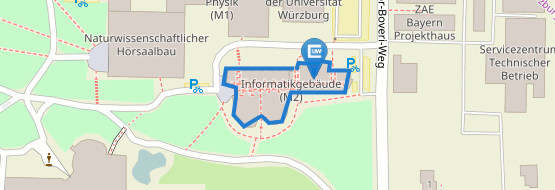Features
QPME Features
If you have a suggestion for how to improve or enhance QPME in directions not covered by the features below, please file a feature request in our feature request tracker.
Currently Supported Features (v2.00)
Model Analysis Methods
- Discrete Event Simulation (SimQPN)
- Method of non-overlapping batch means
- Method of independent replications (replication/deletion approach)
- Method of Welch for estimating the length of the initial transient
- Support for simulating hierarchical QPNs (HQPNs)
Reported Metrics
- Token throughput (arrival and departure rates)
- Minimum/maximum number of tokens
- Average number of tokens
- Token color occupancy
- Queue utilization
- Minimum/maximum observed token residence time
- Mean and standard deviation of observed token residence times
- Confidence interval for the steady state mean token residence time
- Custom probes for observing token residence times across multiple places
- Histogram of observed token residence times
- Interface to the statistical tool R for further statistical analysis
Results Visualization
- Tabular data
- Bar charts
- Pie charts
- Histograms
Supported Queueing Disciplines
- First-Come-First-Served (FCFS)
- Processor-Sharing (PS)
- Infinite Server (IS)
Supported Service-time Distributions for Queues
- Beta
- BreitWigner
- BreitWignerMeanSquare
- ChiSquare
- Gamma
- Hyperbolic
- Exponential
- ExponentialPower
- Logarithmic
- Normal
- StudentT
- Uniform
- VonMises
- Empirical
- Deterministic
Supported Extensions to Standard QPNs
- Global QPN-wide list of token colors
- Distinction of firing weights at the transition level from the firing mode level
- First-In-First-Out (FIFO) token departure discipline for places
- Possibility to share queues among multiple queueing places
Features Under Development
Model Analysis Methods
- Further techniques for simulation output data analysis
- Spectral analysis
- Standardized time series
- Further variance reduction techniques
- Further methods for estimating the length of the initial transient (warm-up period)
Planned Future Extensions
Model Expressiveness
- Load-dependent service times (resource demands)
- Further scheduling strategies for queues (e.g., GPS, Priority)
- Transition priorities and inhibitor arcs
- Timed transitions and immediate queueing places
Model Analysis Methods
- Support for parallel/distributed simulation
- Support for analytical solution techniques
- Structured analysis techniques (e.g., structured SOR, structured JOR)
- Product-form solution techniques
- Approximation techniques
- Support for tolerance limits


